Hey! Thanks for following along. I launched a new website over at https://www.theecopoet.com/ — Check it out! I will no longer be posting here but will continue to post on The Eco-Poet
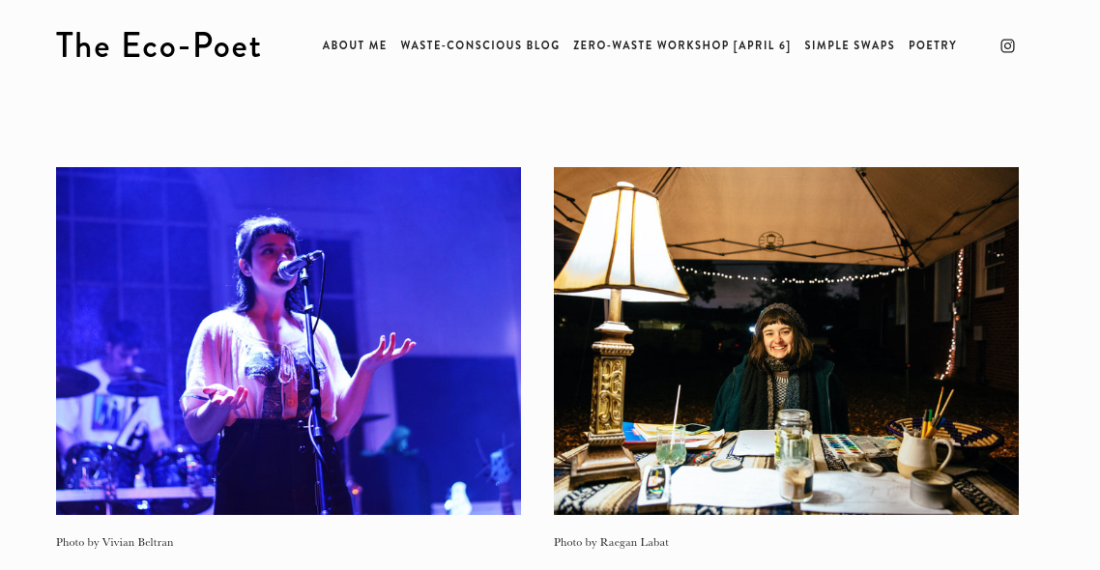
In pursuit of a zero-waste lifestyle that respects the world around us.
Hey! Thanks for following along. I launched a new website over at https://www.theecopoet.com/ — Check it out! I will no longer be posting here but will continue to post on The Eco-Poet

It’s January 2019, the beginning of a new year. Loads of people are making new changes: altering their diet, giving new exercise patterns a shot, cutting sugar out for a while, etc. New year brings a sensation of new things whether that be weather changes, a new season, or something to look forward to.
For me, 2019 will be full of new things, and I couldn’t be more excited. I’ll get married, go to Costa Rica for over two weeks, and we will move across the country where I’ll hopefully be starting a graduate school program.
Maybe 2019 for you just looks like trying to make more eco-conscious decisions. That’s awesome, and maybe why you’re reading this blog post.
As so many changes head my way, I’m being much more budget-minded when it comes to finances (since I’ll be joining my bank account soon, eek!). For me that means that I’ve been shopping at less expensive grocery stores.
I live in Baton Rouge, Louisiana. Bulk shops are rare (Whole Foods lets you bring your own jars here and a small local store called Our Daily Bread has a small bulk section and they’ll struggle through manually weighing your jar and calculating on a 1980’s register). Common conventional grocery stores here are Walmart, Trader Joe’s, Target, Calandro’s (local), Winn-Dixie, Albertsons and Rouses Market (mostly local).
I will totally shop at Trader Joe’s, but almost every item is in plastic. I also learned from an employee there that all there “loose” produce comes wrapped in loads of plastic. I prefer not to shop at Walmart or Target, if I can avoid it (for ethical reasons).
Tonight I went to a shop called Rouses Market. Rouses has been family owned since it opened in 1960 and they’re only located in Louisiana, Mississippi and Alabama. It has competitive prices, cheaper than what I’ve seen at Target and Albertsons. Mostly on par with Walmart (at least for the items I buy, organic, vegan, etc.) with a few items cheaper and a few items more expensive.
Even if you don’t have access to a Rouses — there may still be some tips/tricks in this post about how to look for items through an eco lens as you shop in conventional grocery stores like this one.
When shopping at a conventional grocery store think about some questions: Can I find this loose? Is it recyclable in my area (for us in Baton Rouge, that’s glass and certain plastics)? Is it in a reusable container (glass, thick plastic, etc.)? Is there compostable packaging? Is it local to my city / state / country?
At Rouses, I was pleasantly surprised by a large selection of vegan, organic, and local items.
When grocery shopping with a goal to make eco-friendly decisions prioritize 5 things:
- bring your own bags
- try to by loose items
- try to buy smart packaged items (reusable, recyclable, compostable)
- try to buy local items
- vegan > non-vegan
At Rouses, I was able to find quite a lot of loose and local produce. I found local sweet potatoes, oranges, lemons, local squash, local zucchini, asparagus, cilantro, broccoli, onions, and mangos. I also saw (but did not buy) loose mushrooms, and dates!
There were plenty of items packaged in such a way that I could reuse, recycle or compost them. I got tea with compostable bags (although it had small plastic film exterior), olives in a glass jar I will reuse, maple syrup from Wisconsin in glass (United States better than abroad when thinking of eco impact in a broad sense), apple cider vinegar in glass, white distilled vinegar in glass and a bottle of Puerto Rican rum in glass. I also saw jam in glass (some local) in totally reusable jars, peanut butter and nut butters in glass or thick plastic (reusable or recyclable), mexican sodas (with real sugar) in glass, many sauces (some local) in glass, olives and pickles (some local) in glass, tons of syrups including Louisiana cane syrup in glass bottles, Amy’s soups in cans, and many organic vegetables in cans.
I was impressed by the vegan options, which were a lot more than what I’ve seen at Albertsons, Calandros and Walmart. I bought a vegan granola in cardboard with a plastic interior bag. I also bought sweetened condensed coconut milk in a can, and regular coconut milk in a can. I saw that they had two full doors of vegan frozen foods, vegan meat substitutes, a large selection on non-dairy milk, organic and vegan granola, vegan SO ice cream, vegan SILK yogurt.
Side note for Louisiana shoppers: I also saw local salsa in glass, local long grain louisiana rice in plastic (but local rice is so good for environment as far as sourcing and transportation goes), local honeys in plastic, local coffee, etc.
They do have a bulk section. I have yet to confirm if they will accept the use of our own containers. I will update this when I know!
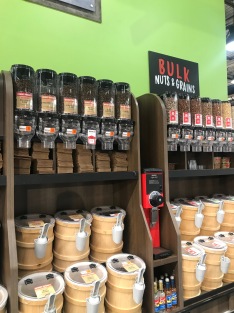
In summary, just do your best! This way of shopping may take some time to get used to as it opposes the grab-and-go mentality we are taught more often than not. Although grocery shopping is a thoughful process, it doesn’t have to take a long time! You learn what you want, how to shop, and how to move quicker over time. I will say, don’t go to the grocery store when you know you’re going to be rushed or feel stressed, go when you have time. That way, you won’t make impulsive decisions!
Here is my buggy in the store and what I arrived home with:
Happy Shopping!
Fast fashion, according to Merriam-Webster, is “an approach to the design, creation, and marketing of clothing fashions that emphasizes making fashion trends quickly and cheaply available to consumers.”
Fast fashion is also the term used by fashion retailers to explain how designs move from the catwalk (like at New York Fashion Week) to a store where it’s available for the general public to buy. This captures the most current fashion trends and typically these trends change twice a year with the major spring and fall fashion line releases.
This idea of a speedy manufacture at an incredibly reduced price is championed by stores such as H&M, Zara, Primark, and Topshop.
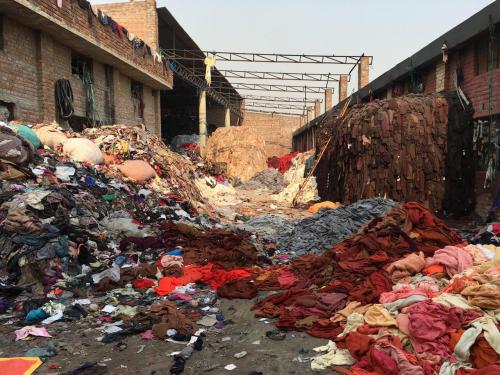
In a desire to captivate the consumer and encourage them to buy more, a retailer has to move incredibly swiftly to ensure that the new hot trend recently released makes it to their shelves at an affordable price. What often happens in this rush to please and/or captivate a consumer is that the quality of the item decreases and the way the item is produced is questionable, at best.
This is where we branch off into two main dilemmas with fast fashion: ethical concerns and environmental concerns.
When a large company is trying to move quickly to produce an item at an affordable price for the average consumer and within a very limited time frame, something’s gotta give —
In order to produce cheap items, companies look for cheap labor. Where better than factories in countries with lax labor laws? Or, countries where there’s enough legal loopholes to access cheap labor?
This often lands the assembly and production of items in a factory outside of the United States and Western Europe. In these factories, workers are often paid less than the minimum wage. Even if they are paid the “minimum wage,” it is often not a living wage (meaning that any person could pay all of their bills on the money made by the wage at the bare minimum). In China, Bangladesh, and India, the minimum wage represents between half to a fifth of the living wage. – Clean Clothes Campaign
In these factories, workers are denied proper protection like gloves, masks, and adequate ventilation. Often people work 12-16 hour days without breaks for the equivalent of a few cents every hour.
Child labor is also an issue. “The International Labor Organization estimates that 170 million are engaged in child labour, defined by the UN as ‘work for which the child is either too young – work done below the required minimum age – or work which, because of its detrimental nature or conditions, is altogether considered unacceptable for children and is prohibited.’” – The Guardian
In addition to child labor, inadequate access to protective gear, long days, unjust pay, and abuse, the conditions in which these laborers work are often truly hazardous.
John Hobson’s article, “To die for? The health and safety of fast fashion” sheds light on the 2013 Savar building collapse in Bangladesh, the deadliest garment-related accident in history. Hobson says, “Since 2005, at least 1800 garment workers have been killed in factory fires and building collapses in Bangladesh alone according to research by the advocacy group International Labor Rights Forum and the problem affects many other countries where cheap clothes are manufactured.”
In 2015, the fashion industry was responsible for the emission of 1,715 millions tons of CO2, or about 4.3% of global carbon emissions of the 39.9 billion U.S. tons produced that same year. – 2016 Trends in Global CO2 Emissions
Not only is fast fashion responsible for CO2 and other greenhouse gas emissions, the switch from natural fibers to synthetic textiles can be attributed to fast fashion. Polyester is found in 60% of garments in retail stores today. – James Pruden, 2017
When you wash polyester clothing at home, microplastics are shedding and entering the water system which is leading to pollution in waterways and oceans. In October of 2018, there was a study published with a small control group where it was discovered that 100% of the subjects had microplastics in their poop. – National Geographic
According to Claudio’s article, Waste Couture, “The manufacture of polyester and other synthetic fabrics is an energy-intensive process requiring large amounts of crude oil and releasing emissions including volatile organic compounds, particulate matter, and acid gases such as hydrogen chloride, all of which can cause or aggravate respiratory disease.”
In summary, the rapid production to meet the demand for fast-fashion items includes the use of synthetic materials which require a large quantity of energy to produce, create a large amount of emissions in the process, and then have a continued negative impact as they release microplastics and never biodegrade.
It is said that the average woman wears a clothing item 7 days before tossing it (Throwaway Fashion). This continual buy-toss cycle means that somewhere synthetic clothes are piling up (most likely a landfill) where they never biodegrade, release additional greenhouse gases as they sit in a landfill, and shrink to microplastics.
Enter “slow fashion,” the alternative to fast fashion. This has also been referred to as “ethical fashion,” or “conscious fashion.” This alternative emphasizes ethical supply chains and keeping the same well-produced and quality item for a long time, not really needing to replace it.
This is a sustainable model promoting a circular economy. A circular economy is the antithesis to a linear economy where you make, use, dispose. This would be where “we keep resources as long as possible, extract the maximum value from them whilst in use, then recover and regenerate products and materials at the end of each service life.” – wrap.org

Be mindful of your purchases. Buying power is real, especially in our current capitalistic society/consumer-driven market. We can “vote with our dollars” meaning that we communicate our demand for ethical goods or quality/natural goods by buying those items and hopefully creating a new demand in the marketplace.
An easy and inexpensive way to go about this is to thrift shop or buy second hand. Buying second hand gives life to an old item, and encourages a circular economy. It directly combats our linear economy (make, use, dispose). Even if you’re buying a new, or practically new item from a thrift store, the company who made the item is not receiving the money (they’ll never know you have their item) and that means you’re not encouraging unethical practices. A lot of thrift stores also help your local area, or function as charities.
If you need to buy new, be thoughtful. Can you buy this from an ethically sustainable or environmentally sustainable brand? If not, buy something that will last the longest. Look for sturdy items, real/natural materials, etc.
Buy less! An easy and inexpensive way to help, is to buy less things. You will be directly discouraging the consumerist market that promotes a buy-dispose mentality by simply buying nothing at all.
*** Whenever it comes to buying stuff/buying power, it’s important to consider the way in which privilege impacts our ability to choose. People with access to education, and resources have the agency to choose to buy second hand, take time to find the item online secondhand, buy from expensive (but quality) sustainable stores, and often don’t live in a scarcity mindset. It’s especially important not to shame those that cannot, and to consider your privilege as responsibility.
Because of my unique set of circumstances (race, class, ethnicity, age, even my gender), I feel the weight of responsibility to be extremely mindful in my purchases because I have the time/energy/effort/money/access to resources to do so. I may not currently have a lot of money, but I can save up to occasionally buy an item from a sustainable store (like Everlane) and I never need an item so bad (like a winter coat, or a quilt, or shoes for my child) that I don’t have the leisure and time to thrift one that I like. I also don’t have children, which gives me additional leisure and time to peruse or schedule freely. ***
If you take a hard look around your bathroom through the lens of waste-consciousness, you may be surprised to find all the harm contained in tiny products that were marketed to you as good! The tricky thing about consumerism and capitalism is that lots of people are telling you what you should buy, what you should use, where you should buy it and how to find it cheaper. These people don’t have your best in their mind; they’re only thinking about lining their pockets. Between commercials, editorials and curated Instagram’s, it’s hard to find what’s really good!
Thankfully, with a push toward organic foods, whole foods and natural approaches to skin-care and medicine, we’re all starting to get better at reading ingredients.
Before I was zero-waste, I was naturally-minded. I would take the time to look at the ingredients on my “organic” shampoo and to google the stuff I didn’t understand. This was a great practice and one helpful tip I learned is that: if there are many ingredients that you can’t pronounce, it may not be good for you. The one exception here is if a vitamin is written using its scientific name, or if baking soda is written scientifically, etc. Although, I have an allergy to baking soda in products so either way I’m not buying it.
“Our current culture of consumption is unsustainable. Extracting raw materials from natural spaces requires large amounts of energy and causes pollution, whether it is logging a forest, mining for minerals or drilling for oil. Processing these materials requires more energy and causes more pollution. Once they’re used, the goods are simply dumped in a landfill or destroyed in an incinerator.” – Toronto Environmental Alliance (TEA)
The alternative to this culture of consumption is a zero-waste approach. This kind of approach would conserve natural resources and reduce pollution.
Adopting the mantra “reduce, reuse, recycle” and living by it means less products are made, people buy less and products are made to last. Recycling keeps waste out of landfills and supplies manufacturers recycled materials instead of raw materials to make new goods and products.
We’re learning more every day about the dangers of plastic, both to our bodies and the earth around us. That being said, when we approach purchasing, we’re not only thinking about plastic packaging. We should consider ingredients, where it came from, how far it traveled and how it is packaged.
First and foremost, before you make these sustainable switches, go ahead and use up what you already have before you buy a replacement (unless what you’re using is straight up harmful and full of chemicals). Some shampoo and conditioner bottles can be recycled, so be sure to read the bottle carefully. If it can be recycled, clean out the bottle and lay it out to dry before you place it in the recycling bin.
When you’re ready to start replacing your old items, you have the internet available to you to help guide your decision making. There are plenty of product reviews now, written by real people. There are also many zero-waste bloggers giving their opinions (of which I am one). Take everyone’s opinion with a grain of salt and find what works for you, especially with skin care. Everyone’s individual needs may be a little different so don’t beat yourself up if what your body needs comes wrapped in plastic. We’re all just doing our best.
Toothbrushes: did you know that over 1 billion plastic toothbrushes end up in the landfill every single year in North America? That’s just North America! They also take 400 years to decompose.
Sustainable Switch: Bamboo Toothbrush! Here’s a list of many
Body wash/Soap: Usually come in plastic, may not contain ingredients that are good for you. Even if that plastic bottle can be recycled, only 50% of what we put in our recycling bins is actually recycled. It takes about 1000 years for a plastic bottle to decompose if thrown into a landfill, and each bottle leaks harmful chemicals into our environment as it decomposes
Sustainable Switch: loose soap bars made of natural ingredients! If not loose, in cardboard or paper.
Razor/Shaving: typically disposable razors that are plastic and can’t be recycled at all. Perhaps a plastic reusable body with only disposable razors. Shave cream in tin can or plastic bottle, full of chemicals to make it foam.
Sustainable Switch: Safety razor – it will last forever and is made of real metal. It can eventually be recycled through the proper channels (not your bin). Blades that are also metal and can be recycled by the company who makes them (you would mail them back). Natural loose soap bars that do create a layer of foam but not the fake chemical kind.
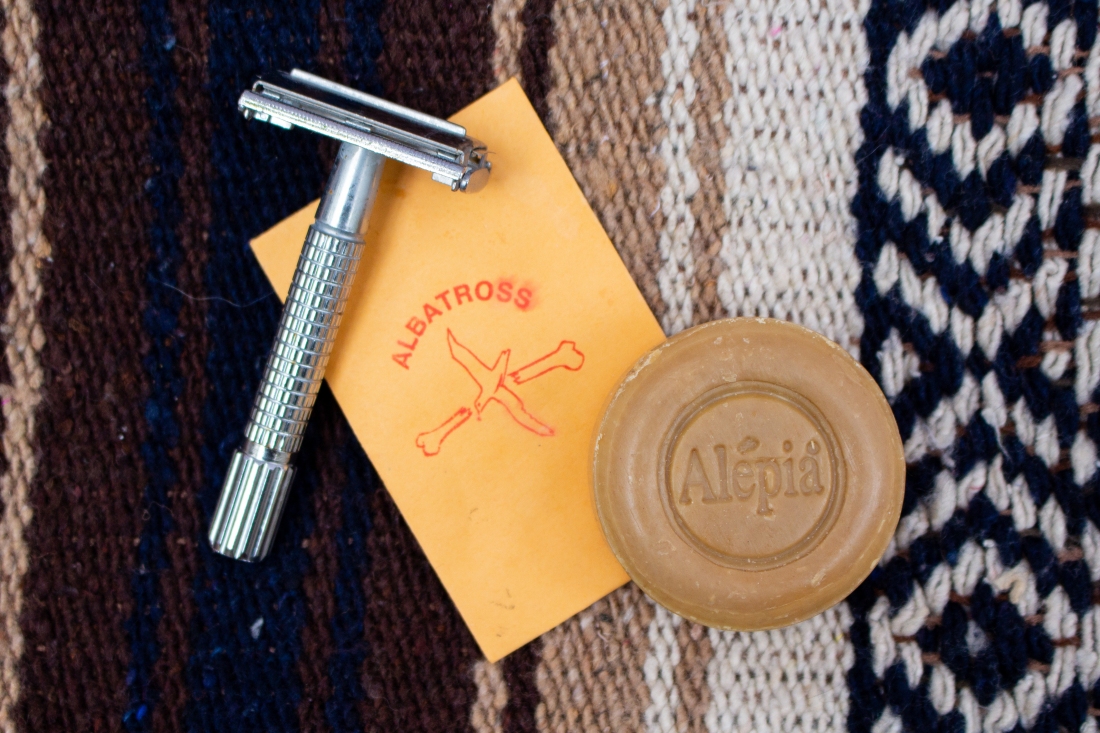
Floss: usually made of nylon, in a plastic container. Very harmful to marine life.
Sustainable Switch: Dental Lace comes in glass, not synthetic. Check it out
Shampoo/ Conditioner: possibly non-natural ingredients, possibly full of chemicals. In plastic, potentially non-recyclable plastic.
Sustainable Switch: loose shampoo and conditioner bars like these, or if you can find a refill station that let’s you refill your own containers. There are no refill stations in Baton Rouge, where I live. I buy shampoo bars from online shops. Whole Foods has some bars in cardboard if I run out and didn’t order online. I’ve heard Lush makes a shampoo bar, but can’t remark on its quality.
Toilet Paper: made from trees, harmful in production and harmful in disposal.
Sustainable Switch: a bidet like this or toilet papers like the one from Who gives a Crap?
Tooth paste: in a plastic non-recyclable tube. Who knows what’s in it?
Sustainable Switch: make your own using coconut oil and baking soda with a few other ingredients! You can buy tooth powder, or tooth paste in glass jars. If you’re buying and not making, be sure to read ingredients.
Lotion: typically in plastic tube or container. Usually non-recyclable packaging. Questionable ingredients
Sustainable Switch: make your own! Or, buy lotion bars. I love this lotion bar. I love this face lotion.
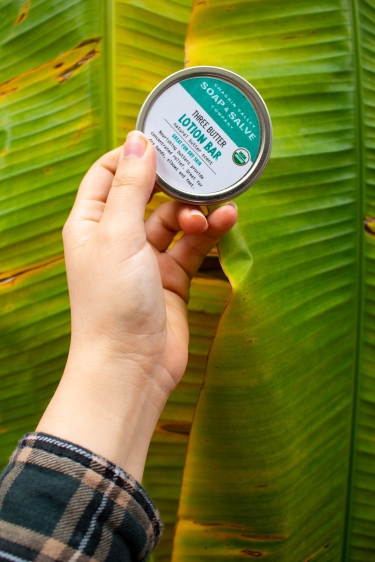
Deodorant: Antiperspirants control both sweat and body odor. They prevent sweat with aluminum salts dissolving on the surface of the armpit, creating a plug near the top of the sweat glands. This can be damaging for your body in a lot of ways. There are also certain ingredients like parabens that have been reported to increase the risk of breast cancer. Typically comes in plastic packaging.
Sustainable Switch: I use this deodorant from Little Seed Farm Little Seed Farm in glass made of all natural ingredients.
This is just the tip of the iceberg and this list doesn’t touch on menstrual care, or household cleaners. More to come on that soon. Unfortunately, I probably won’t be the person to go to for your makeup questions, as I rarely wear makeup. I do hear of people making their own and I may do some research in 2019 to guide y’all towards good brands.
Just remember — small switches make long lasting impacts! Even if it feels like you’re just doing something small, it matters.
You may have seen articles, memes or comments in the last month alluding to how we are all going to die in “10-12 years.” This comes from a recent report published by the IPCC in the beginning of October. You can find the full report in detail here.
If you’re not a scientist, like me, you can find their press release online. I used this resource as a summary to help me understand their findings. The report hinges largely on limiting global warming and the rapid increase of earth’s surface temperature. According to current projections, if we were to do nothing differently and change nothing, we would see an increase of around 3ºC and this would be devastating to our ecosystems. We want to limit global warming to around 1.5ºC.
“Limiting global warming to 1.5ºC would require rapid, farreaching and unprecedented changes in all aspects of society, the IPCC said in a new assessment. With clear benefits to people and natural ecosystems, limiting global warming to 1.5ºC compared to 2ºC could go hand in hand with ensuring a more sustainable and equitable society, the Intergovernmental Panel on Climate Change (IPCC) said on Monday.”
We are already seeing the consequences of global warming through extreme and unexpected weather, rising sea levels and more.
The report also reviews methods to limit global warming. It highlights what would be necessary to do these things and some consequences if we fail to change. In order to limit global warming to 1.5ºC, we would need to radically change how we do things. Countries like the United States and China need to embrace clean energy, for example. However, the consequences of not adapting are truly dire. If we see a 3ºC increase in a decade, we will see about 50% of our ecosystems die and as a result, people would die too. This sounds extreme, and scary! It is.
However, we are not hopeless.
“Limiting warming to 1.5ºC is possible within the laws of chemistry and physics but doing so would require unprecedented changes,” said Jim Skea, Co-Chair of IPCC Working Group III.
We have some time to prevent this environmental crisis. We can do things in our personal lives to help. We can also bring awareness to this issue, vote accordingly, lobby, and encourage our governments to embrace clean energy.
As individual people, our personal efforts matter very little. As a collective, though, together we can make a change. Don’t let anyone tell you that your choices are meaningless. They are not! Especially now, every little bit helps. When dealing with a crisis in the terms of degrees, the smallest positive weight can help tip the scale. We can all contribute!
What can you do to help?
The world may seem like it’s ending but we’re not dead yet. If you’re like me, you would rather go down fighting. I “fight” by living a waste-conscious life, eating vegan, talking about this, sharing my tips and writing letters to my local government! I am trying to find new ways to advocate more for the environment all the time.
We can do this, if we work together!
I recently spent 6 weeks in Paris, France. I looked up blogs on blogs about how to prepare for travel in a waste-conscious manner and although I happened upon some good sources, I found there wasn’t that much information out there to help me get ready for this trip, mentally or otherwise.
I say this often but it’s important to simply do your best. You may create trash, but are you doing your best to avoid it? If you are, you can rest easy knowing that sometimes things are out of your control, and that’s okay. We can’t be held responsible as individuals for a corporate and capitalistic system that is built against us, especially in regards to environmental consciousness.
To be super honest, our individual sacrifices mean very little against the system that is set on single-use/convenience and waste. The idea behind the waste-conscious or zero-waste movement is simply that if enough individuals alter their lifestyles and purchases (“buying power”), there will be enough demand in the marketplace for the supply to meet the demand. OR, that if enough individuals are vocal/vote differently, there will be enough collective power to negotiate for new laws and regulations put into effect by local and national government agencies. This is a long game but we are here to play the long game because we only have one earth, one atmosphere, one water source, etc. Our individual choices are worth it!
The great thing about living this kind of lifestyle is that people ask me questions all the time! I have strangers come up to me at the coffee shop where I work telling me I inspired them to make small switches. That makes me feel reassured because our decisions as individuals do affect the world around us.
I have chosen to embrace the mentality that my choices are my own and I am responsible for them but I cannot control the decisions or actions of people around me.
I have chosen to embrace an attitude that is not angry at individuals for their wasteless-ness, but angry at the systems that changed our market and angry at the lack of education and environmental awareness, especially where I live in the South of the United States. This means that I try very hard to not be judgmental toward others and I do my *best* to keep my mouth shut unless people ask/inquire.
When traveling to another country that is not your country of origin, I think it is extremely important to prioritize cultural sensitivity and kindness over some* of your personal convictions. You’re entering into a space that is not your context, sometimes not your language and whereas normally you can have a full conversation about why you use the bulk section with your local grocer, the language barrier may keep you from being able to have this conversation. Sometimes, it will be more important to accept trash than to cause difficulty to someone who can’t understand you and is just doing their job.
*** Here I will pause to say that this is in regard to trash, specifically. If you are a strict vegan, you do not need to relent. You can totally figure out vegan options wherever you are and typically people can understand that. Only if you were in a rural area in a developing nation would I consider asking you to take time to talk with someone from the area to decide if you should eat what they provide (even if it’s animal protein) for cultural reasons. That would be a very rare and unusual scenario and most tourists won’t find themselves in such a place ***
This is *especially* important if you’re an American, unfortunately. Americans do not often have a positive reputation abroad and with Trump as our President, non-Americans are even more suspicious of us. That is not your fault, but don’t contribute to the negativity! Be respectful, always.
This doesn’t mean you’re living in a free-for-all! This means you’re prepared, you’re going to do your best but you’re not going to prioritize not making trash over a social interaction/cultural insensitivity.
What can you do?
Always be prepared!
I, however, was overprepared. I packed my own fork-knife-spoon, hot cup, cold cup, straws, wine cork, napkins, 32 ounce water bottle, produce bags, grocery bags, bar soap, rope for hanging clothes to dry, charcoal to filter water and a few old gelato containers filled with snacks. I also brought one large stainless steel tiffin, and one small tiffin.
If I could do it again, I would bring:
I would not bring the bulky stuff I brought like the stainless steel tiffins, old gelato containers, both a hot and cold cup, and a large water bottle. I also wouldn’t bring the charcoal again to France; I didn’t need it there. My 32 ounce bottle was too bulky and I wished I brought a smaller one. I did use the rope to hang dry clothes but could’ve hung them on chair backs, windows etc.
Every day when I went out, I had a cup of some kind (usually a water bottle and my hot cup), my utensils, my napkin and a bag inside my purse/backpack.
Grocery shopping was easy in France. I found an organic food co-op with a bulk section. They didn’t speak english so I was unable to use my own containers (like jars) for the bulk section but could totally use my own produce bags for that (I didn’t get a tare weight before). They also had compostable brown bags for the bulk section as well.
In France, they charge you for a grocery bag so everyone brings their own bags to the store. At bread shops, they were usually okay with putting bread into my own bag. If I had to use their bag, it was almost always recyclable or compostable paper.
If you’re going to a place with another language, learn how to say:
These will help you reduce your waste, even if you are speaking in fragments. Some languages are harder to learn for people, depending on your first language and what you’ve been exposed to, etc.
Always be kind, smile, say please and thank you.
Gestures will get you pretty far, too! Cue me in the bread line saying, “in my own bag,” in French as I held up my bag and smiled. If they couldn’t understand my accent, they understood from the empty bag I was gesturing toward.
At restaurants, I put my own to-go food in my own containers quickly, trying not to draw attention to myself. Take-away was a little more difficult. Some European countries are better about biodegradable materials and their take-away containers are compostable. I found this to be true many places in Paris.
Before you leave your house to head on your adventure, I would download the city map off-line in Google for the place you’re going. I would look up ahead of time: co-op’s, zero-waste shops (if any), vegan cafes, etc. and save them to your google saved places.
If there are no grocery shops with bulk sections/co-ops available, go to a regular grocery store and just buy cardboard options and glass options. You can easily find water in glass (sparkling, usually), pasta in cardboard and sauce in glass, for example.
When eating out, specify “for here” and most places will provide real plates/cups/mugs.
At the end of the day, however, do your best and enjoy your time in a new place. It is far more important to enjoy the place where you are, meet people and hear their stories, be kind and not make people’s lives more complicated, learn about a new culture and to value someone’s else’s home than it is to be uptight about your convictions, judgmental or difficult!
Unless you have the ease, time and vocabulary to explain why you’re doing what you’re doing in a non-judgmental or offensive manner, sometimes it may be easier just to go with the flow even if that lands you with a little trash.
When in Rome —
The goal of Plastic-Free July is to encourage people to be aware of their plastic consumption.
The world’s struggle with plastic, and single-use items has not been around for that long, but we’re already seeing devastating environmental impacts from it. Our great-grandparents didn’t use plastic cups, plates, straws, plastic wrap, ziploc bags, etc. They used reusable resources: glass, tin, cans, wood, etc. Although some convenience is helpful (not having to cook every meal from scratch), we are learning that total convenience is dangerous!
Not only is plastic-use having long-term negative impacts on our environment and eco-systems but also on our bodies!
“Plastic is the most prevalent type of marine debris found in our ocean and Great Lakes. Plastic debris can come in all shapes and sizes, but those that are less than five millimeters in length (or about the size of a sesame seed) are called “microplastics.” Aquatic life and birds can mistake microplastics for food. In 2015, the U.S. banned the use of microbeads but microplastics are still a huge problem.” – https://oceanservice.noaa.gov
Don’t even get me started on the plastic in our clothes! Fast Fashion is killing us slowly with non-sustainable sources.
This is overwhelming! Instead of feeling like you’re stuck under a pile of plastic, you can make small lifestyle changes that will positively impact yourself, and the world around you!
You can do something: Plastic-Free July is a fun way to start because you’re going to be surrounded by people all doing the same thing. You’ve done a diet, or a cleanse before, you know that you can do anything for 14-30 days.
You can sign up to join Plastic Free July online at http://www.plasticfreejuly.org/register.html and they will e-mail you tips!
You can invite your friends/significant other to do it with you so that you’re not alone!
You can make simple swaps to help you in your month of avoiding single-use plastics.
This is a challenge, not a competition! Be gentle with yourself and only do what you can do. Take in mind that ANYTHING you do that is positive for the environment is positive! No matter how small or big you choose to dedicate your changes for the month of July, or after, anything small makes a big impact!
For this challenge –> You’re doing your best to avoid plastic where you can, so avoiding plastic-wrapped groceries and opting for loose produce and cardboard boxed items instead and trying to deny the plastic to-go items stores so enthusiastically want to give you!
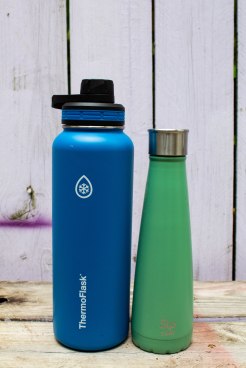
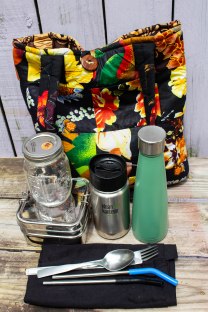
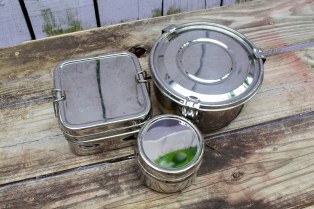
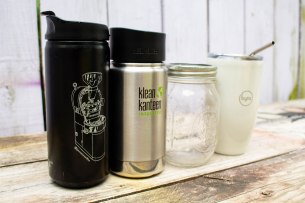
Check out the “living plastic free” tab on Plastic-Free July’s Website for more ideas!
Remember that you are not alone! Living a low-waste life can be awkward at times but that’s anything you do that isn’t what the mainstream is doing.
Pick your individual challenge for July –> It could just be that you’re going to say no to straws for all of July or it could be no plastic at all!
Pick what you’re going to do for #plasticfreejuly and go for it! Let me know what you’ve decided to do on my Instagram @emilyy.jeann and if you have any questions, I’m happy to help!
Good luck! The Earth is on your side
Growing up in the age of technology, we are taught to move fast. Information moves fast, our computers move fast, our smart phones move even faster and we are expected to move just as quickly, absorbing this information and responding. We are trained to be little machines: input, output, increase of productivity, etc.
There is just one problem: we are not machines! We are human beings. The thing that makes people unique is our empathy, our ability to reason and our ability to change our minds or adapt situation-by-situation.
Do not misunderstand me: new inventions, technology and the vastness of the internet are all wonderful and beneficial things if used properly. The issue comes when every part of our lives and society pushes us to move quickly and to stop thinking about the things we are doing in the quest for efficiency.
Going “zero-waste,” or “waste-conscious” makes you slow down. There is no, “I’ll just run by the grocery store super fast and pick up this thing.” If you want to make a quick meal, you have already done the meal prep ahead of time, etc. It forces you to think about what you are doing, where you are going, what you might need when you get there, where your food comes from, how it is made, etc.
Although this takes longer, this is a positive thing because as you think more about what you’re doing and where you things come from, you begin to think of the world as more connected.

As a barista working in specialty coffee, we share cups of coffee as stories of people’s lives from “seed-to-cup.” This means that there are hands all along the way from planting that seed, to growing a baby coffee tree in a nursery, to planting it, waiting for it to grow for years, the flower budding, waiting months for a cherry, picking a cherry by hand, sorting it by hand, sending it to be processed, dried, hulled, bagged and then shipped. When it arrives at a roaster, it is then roasted and sent to a barista where that roasted coffee bean is ground and brewed to make the cup of coffee handed to you. Along this process, there are many hands and it is important to think of “the other end of the supply chain.” For coffee, that is the coffee farmer and his/her workers. What are they being paid? How are they treated? How do they treat their employees? For long-term sustainability in producing specialty coffee, we focus on direct-trade or fair-trade relationships that help those farmers make enough money to continue planting and producing excellent coffee for years to come.
This mentality began to seep into other areas of my life and it started with clothes. Thirteen months ago, I had a thought that I simply could not shake: where do my clothes come from? Where does the fabric that makes them come from? Who is at the other end of the supply chain?
The sad reality of the fashion industry is that people are suffering the cost of our demand for affordable clothes that we change with every season. This is called “fast fashion” and it is the model that clothes move from the runway to stores and into our homes but these clothes are not made to last.
One year ago, I stopped buying new clothes with the exception of verifiable ethically-made goods. I began purchasing what I needed at thrift stores, buying secondhand or getting by with less.

After I allowed this mentality into my life: “where do my things come from and where do they go when I’m done with them?” there was no going back. It wasn’t long after that I became more educated on trash, waste, landfills, the instability of recycling and I began living a waste-conscious life.
Since this was my gateway into living a zero-waste life, let’s talk about fast fashion.
The dangers of Fast Fashion are two-fold. First, the other end of the supply chain includes workers working 12+ hour days with no breaks, being paid 10 cents an hour and working in unsafe conditions. Second, there is the negative environmental impact of how these clothes are made, and how quickly they are disposed of.
Your clothes were probably made by someone who was poorly treated, overworked and underpaid who perhaps made that garment while feeling unsafe. That should make you feel a little queasy.
Refinery29.com recently published an article titled, “Fast Fashion Brands aren’t being Honest with You.” Stephanie Klotz, communications manager at the C&A Foundation, which supports Fashion Revolution said, “your reputation-sensitive brands (are) opting in and disclosing their first and second-tier suppliers, but nobody is forcing them. If you go beyond brands and retailers to look at manufacturers, there’s very little information.”
Even if your clothes were made by people paid a living wage in a decent workplace, there is no guarantee that the fabric those garments were made from was made in those same conditions. You have to go to the source. Most companies are not disclosing this information at all, but even if they do, they will exempt any information about the fabric-sourcing itself.
“The garment industry, like all truly global industries, is tangled up in complex debates about human rights violations, immigration, and corporate regulation. And companies still profit from exploitative governments.” – Refinery29
Not only are our clothes not being ethically made but there is a ton of waste involved. The Ellen Macarthur foundation recently did a study showing that one garbage truck of textiles is wasted every single second. It goes to a landfill, or is burned.
“The globalised market has encouraged a “fast fashion” phenomenon where clothing is cheap and, therefore, easily disposed of and repurchased. Making clothes requires land and water as well as fossil fuels, chemical dyes, finishes and coatings, some of them toxic. Some of the fibres used in clothes can pollute our oceans and rivers, entering the food chain. There are also environmental issues when clothing is disposed of, with some ending up in landfill or dumped in overseas markets.” – Sky News
According to the Environmental Protection Agency (EPA), 84 percent of unwanted clothes in the United States in 2012 went into either a landfill or an incinerator.
A newsweek report states that, “In less than 20 years, the volume of clothing Americans toss each year has doubled from 7 million to 14 million tons, or an astounding 80 pounds per person. The EPA estimates that diverting all of those often-toxic trashed textiles into a recycling program would be the environmental equivalent of taking 7.3 million cars and their carbon dioxide emissions off the road.”
These models of making cheap clothes that wear out and encouraging people to frequently buy new clothes are not only harming the people making them, but also our environment. With so many of these clothes going to landfills or being burned, we are not only harming the environment but creating a problem that builds on itself.
We can vote with our dollars. Buying secondhand promotes a cyclical economy where things are recycled and reused which is the kind of economy we want to create. This slowly will encourage brands to produce clothes that will last.
If we do purchase new items, we can purchase from ethically-made and eco-friendly brands.
A helpful tip, if you’re wondering if a brand is eco-friendly or ethically-made is that, they will tell you if they are! If they do not say anything, they are probably not eco-friendly or ethically-sourced. It is a marketing point, for brands to advertise that they’re doing the right thing because it is so rare for brands to do the right thing! Be careful though, just because someone tells you that they’re clothes are made in America, you should still look into where their fabric comes from and how it is manufactured.
It is a slow road to change but by abstaining from purchasing from brands that harm people, and the environment and by putting dollars toward brands who care about people and the environment, we exemplify the kind of market we hope to create/promote.
This seems overwhelming, and sad but our small choices now make long-term impacts to build a better world!

Someone asked me the other day what the “key” was to going low-impact or zero-waste and sustaining that kind of lifestyle. The best answer I could give was, “Always be prepared.”
Borrowing the phrase of the Boy Scouts, “Be prepared,” it’s a great motto for anyone looking to minimize their environmental impact.
The days of running to grab an iced latte to-go without a reusable cup are over. There’s no quick trip to the grocery store after work without my reusable bags, jars, etc.
This hasn’t negatively impacted my life, or caused unnecessary frustration. Instead, this preparedness has encouraged thoughtful living, what some would call, “slow living.”
I have learned to love a large canvas tote bag as my purse. I asked my mother if she had any straw woven bags in her closet, she had two she was willing to part with. I now use one as my purse.
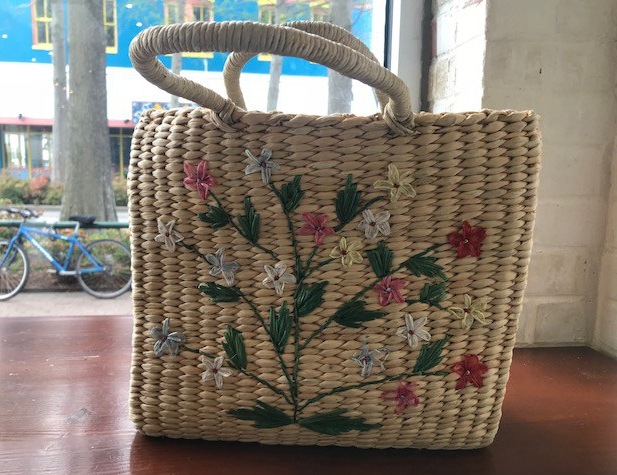
If I use my utensils in my purse, I wash them and replace them with a different set. If I use my straw, I wash it and replace it. If I wash my napkin, I replace it as soon as I drop it in the washing machine.
The car kit exists for the day that I leave things at home, or wash stuff but forget to replace it. It’s for the day that I need to go to the grocery store but I forgot to replace the reusable bag that sits on my passenger seat, or if I heard about a pop-up farmers market but didn’t plan for it.
The reason the items in my car kit are “old” is because the hope is that I rarely use them! Hopefully, I’m thoughtful enough that I don’t break into it often, and therefore I wouldn’t keep my favorite coffee cup in it. The old towel is for practical unexpected things: like getting caught in a rain storm, or spilling a smoothie in my car. The knife is handy in case of emergency, as is the water bottle and charcoal filter. That’s more of an emergency kit item, if my car breaks down in rural US on a road trip and I have to filter rain water.
I also, typically, travel with snacks. I have attended DIY shows late at night with mason jars of chocolate covered raisins in my back pack. One time, at such an event, someone called me a “mom,” because I was sharing my snacks and I threatened to fight her. I might not be a mom but you can call me, “snack lady.”
I have learned that bringing my own snacks, like plantain chips, cashews, or trail mix keeps me from being tempted to buy a snack out where my package-free options are slim, from buying unnecessary items at grocery stores, or from eating lunch out when I have food at home. I try to keep those snacks in my purse. If I have to, I feel comfortable leaving a glass jar of cashews or something comparative in my car for a day but I live in a hot place, so I have to factor that in.
This may seem overwhelming, but it really isn’t. If you’re beginning a journey towards a more waste conscious lifestyle, start simple.
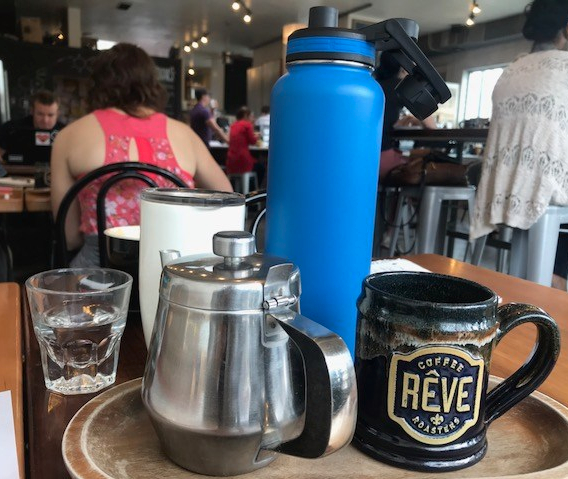
I think that a common barrier to approaching a “zero-waste” lifestyle arises from the intimidation of the name itself. People think, “Oh, I could NEVER make ZERO waste!” The truth is, you don’t have to! Even the best and most “aesthetic” zero-wasters create SOME waste. It may be an extremely low quantity: maybe it’s only from prescription medicines, straws they don’t ask for and a sporadic appearance of junk mail, but it’s waste nonetheless, and it’s their waste even if they don’t put it in their trash jar.
Recently there’s been a discussion about terminology: should people call themselves “low-impact,” “waste-conscious” or “zero-waste” when they describe their journey toward waste-free living?
The internet has been buzzing about the terminology recently because a zero-waster, “Sustainably Vegan,” now better known as The Low Impact Movement, decided to ditch the term “zero-waste” for a plethora of reasons.
[Zero-waste is] “not an all-encompassing term that isn’t showing how a lot of you guys are reducing your impact on the planet,” – Sustainably Vegan
She posted a video about it, which you can watch here. In sum, the origin of her decision to “ditch zero-waste” and promote the terminology, “Low-impact,” lands heavily on her desire to encompass her activism while simultaneously acknowledging everyone’s contributions, big or small, to living waste-conscious lives. She strives for equal representation. Her hope is to build a community and then leverage that community so everyone is able and empowered to do what they can. By switching terms and promoting an increased attention to what people can do, instead of a guilt about what they can’t do, she hopes to create safe spaces where people can build together.
The definition of zero waste from Wikipedia is, “a philosophy that encourages the redesign of resource life cycles so that all products are reused. The goal is for no trash to be sent to landfills or incinerators.”
The definition of zero-waste, an industrial term, is a positive goal for us all to reach for. We, unfortunately, will never accomplish the goal of no trash being sent to landfills without corporations and companies adhering to stricter policies and governments enforcing those. We, as individuals, can massively contribute to a redesign of economy by putting our dollars into responsible businesses or secondhand buying and encouraging re-use, recycling and no single use items. That being said, the definition of zero-waste doesn’t quite explain the “aesthetic” and redesign of lifestyle that the current zero-waste movement promotes, alongside the positive attention it brings to waste-conscious living.
Our goal is to create a circular economy. “A circular economy is a regenerative system in which resource input and waste, emission, and energy leakage are minimized by slowing, closing, and narrowing energy and material loops. This can be achieved through long-lasting design, maintenance, repair, reuse, remanufacturing, refurbishing, and closed recycling loops. This is in contrast to a linear economy which is a ‘take, make, dispose’ model of production.” We currently live in a linear economy.
No matter what you choose to call yourself, I think it’s all good because it’s all bringing awareness to a massive environmental issue. Any earth-conscious decision made by an individual has positive ramifications for the world, and economy. I also agree with Sustainably Vegan that zero-waste can be exclusive: it’s an extreme people think they can’t reach which is promoted by this beautiful picturesque version of curated instagrams and mason jars.
Whatever you choose to label yourself, “low-impact,” “zero-waste,” “waste-conscious,” or just, “Emily,” if you’re making small or big contributions to reducing your waste, or promoting a circular economy, you’re doing an amazing thing!
You shouldn’t feel guilty when you mess up, or buy something you think won’t come in plastic only to find out that inside the cardboard box, it’s wrapped in plastic (happened to me last week), you should feel proud that you’re sacrificing convenience in the hope of creating a better world.
I prefer the term, “waste-conscious” but I often use the term, “zero-waste” when I talk about my lifestyle. And, it isn’t always pretty, or aesthetically pleasing to live this kind of life. It requires a lot of preparation, attention to detail and SO MANY DISHES. My sink is full of jars, my groceries are laid out on the table so I can see what I have and my jar shelf is a mess. That’s what you don’t see on my Instagram.
It doesn’t have to look good, you don’t have to bulk shop in mason jars, you don’t even have to change everything you’re doing! If you make small decisions like bringing your own bags to the grocery store, or buying less plastic, saying no to plastic straws, that adds up to a large positive impact over time!